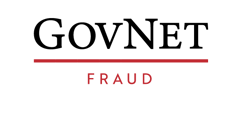In the intricate landscape of central government operations, detecting and combating sophisticated fraud schemes presents a formidable challenge. This blog post delves into the complexities of fraud schemes faced by central government agencies in the UK, including identity theft, procurement fraud, and financial mismanagement, highlighting the need for advanced detection techniques and dedicated resources to mitigate these risks effectively.
Understanding Complex Fraud Schemes
Complex fraud schemes encompass a range of deceptive tactics employed by fraudsters to exploit vulnerabilities within central government systems. From identity theft and procurement fraud to financial mismanagement, these schemes often involve intricate networks of actors and transactions designed to evade detection and maximise illicit gains.
Identity Theft: A Growing Concern
Identity theft remains a pervasive threat to central government agencies, with fraudsters using stolen personal information to perpetrate various crimes, including tax fraud, benefit fraud, and identity fraud. Detecting and preventing identity theft requires sophisticated authentication mechanisms and robust identity verification processes to safeguard sensitive data and protect individuals' identities.
Procurement Fraud: Navigating Procurement Pitfalls
Procurement fraud poses significant risks to central government agencies, with fraudulent activities ranging from bid rigging and contract fraud to kickbacks and vendor collusion. Detecting procurement fraud requires comprehensive oversight of procurement processes, including rigorous due diligence, supplier vetting, and contract monitoring, to ensure transparency and fairness in government procurement practices.
Financial Mismanagement: Safeguarding Public Funds
Financial mismanagement, including embezzlement, asset misappropriation, and fraudulent accounting practices, threatens the integrity of central government finances and undermines public trust. Detecting and addressing financial mismanagement requires robust internal controls, financial oversight mechanisms, and forensic accounting techniques to identify irregularities and prevent financial losses.
Advanced Detection Techniques and Resources
Addressing complex fraud schemes demands advanced detection techniques and dedicated resources, including data analytics tools, forensic accounting expertise, and fraud detection technologies. Central government agencies must invest in training programmes, technology infrastructure, and collaborative partnerships to enhance their fraud detection capabilities and stay ahead of evolving fraud threats.
Collaboration and Information Sharing
Combatting complex fraud schemes requires collaboration and information sharing among central government agencies, law enforcement agencies, and industry partners. By sharing intelligence, best practices, and lessons learned, government agencies can strengthen their collective efforts to detect, investigate, and prosecute fraudsters operating within central government systems.
Compliance and Regulatory Oversight
Maintaining compliance with regulatory requirements and oversight standards is essential for central government agencies in mitigating fraud risks and ensuring accountability. By adhering to legal and regulatory frameworks governing fraud prevention and detection, government agencies can uphold transparency, integrity, and public trust in their operations.
Conclusion
Detecting and preventing complex fraud schemes presents an ongoing challenge for central government agencies in the UK. By understanding the nature of these schemes, investing in advanced detection techniques and resources, fostering collaboration and information sharing, and maintaining compliance with regulatory standards, central government agencies can strengthen their fraud detection capabilities and safeguard public funds and resources effectively.

Nicole Lummis
After a career in Project Management, I realised how important it was for me to pursue a career with a more creative career path. I have a passion for creating engaging digital content whether through written content or the use of image, graphics or videos.




